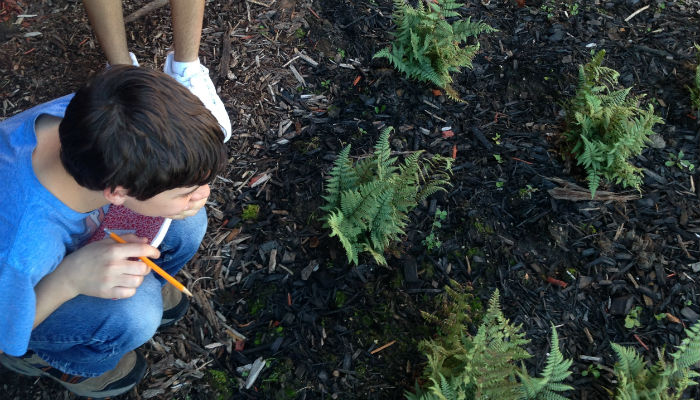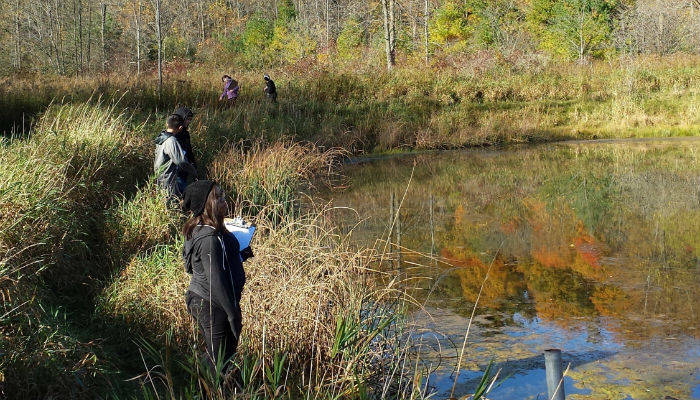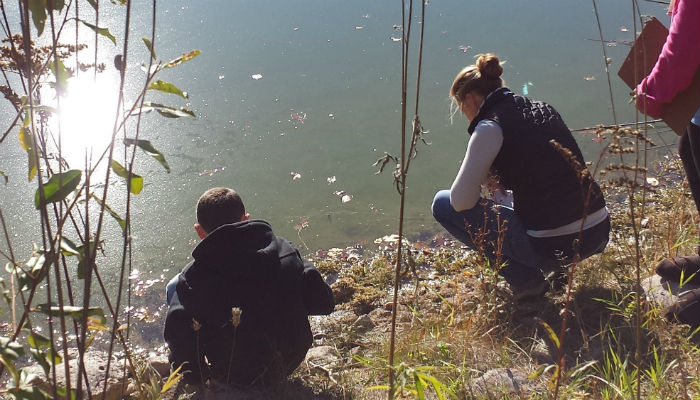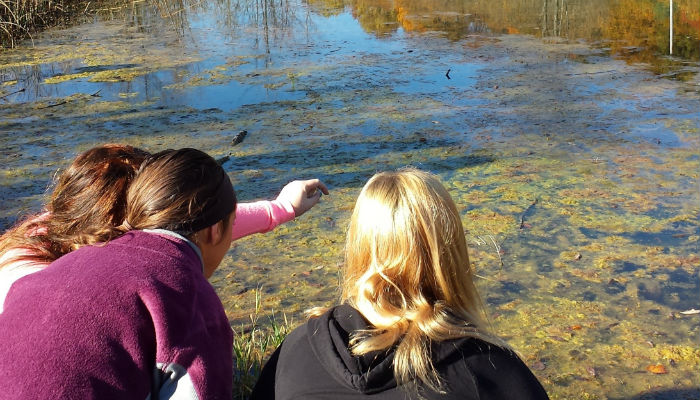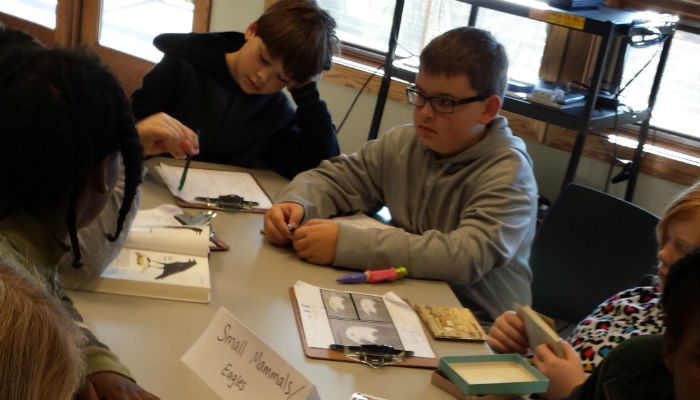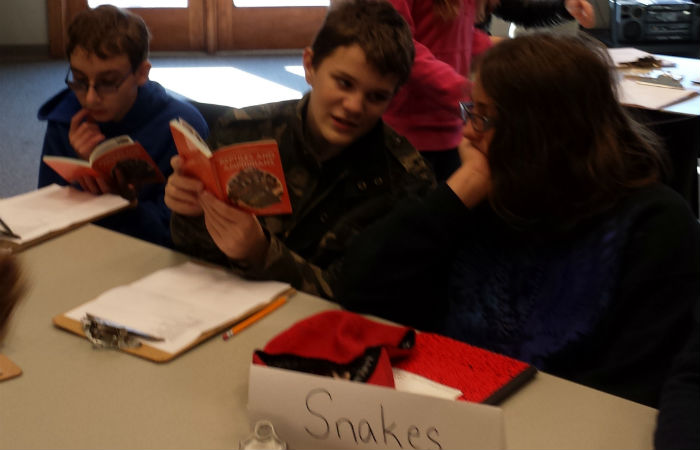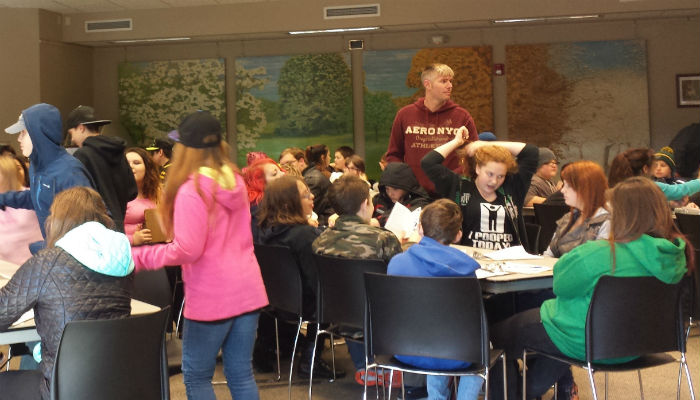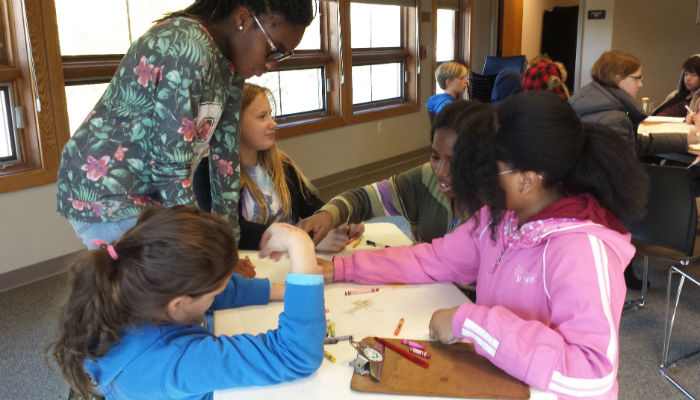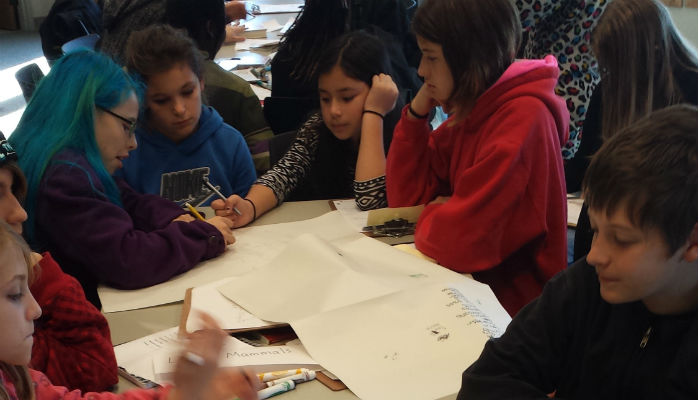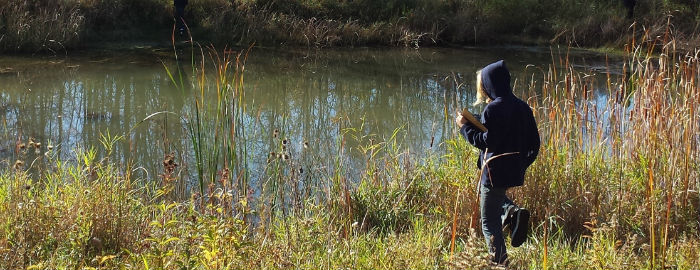
Since the beginning of school, the Energy class at Mosaic has been learning about Energy Transfers and how animals and plants support each other in their natural habitats in Wisconsin. At school, students developed a body of knowledge and good field practices to take with them to Maywood Environmental Park to help them create, from their own observations, a food web for native animals in Wisconsin and a better understanding of the balance of ecosystems.
Preparation in the Classroom
Each student selected a native animal they would like to learn more about. In groups, students studied the daily lives of frogs, turtles, bats, snakes, Bald Eagles, small mammals, or large mammals and began to think about what each habitat would need to look like to thrive in Wisconsin. Out in the IDEAS and Mosaic garden areas and Sheboygan River, students made observations of any energy transfer they saw, like a bird eating seeds or the sun shining on plants. They took these observations and research, each group developed an organizational model and a body of knowledge with which they could take into the field to observe their chosen animal in its natural habitat.
The Real Thing with Outdoor Education Experts
After the preparation at school, students were excited to take their practice observations to the real thing! Maywood Environmental Park is a protected area with six ecosystems and 135 acres to explore nature and wildlife. We also teamed up with Camp Y-Koda’s Outdoor Education Team so each student group had an expert on hand to guide them through habitats and answer questions.
Observation Walks
Each group set off with their groups to explore their native animal’s habitat and make observations of the animal if possible, evidence of the animal, and apparent energy transfers. The bat group headed into the Maple Forest, where they observed tall deciduous trees, bat houses, and dead trees. The mammal and snakes groups combed the extensive Prairie region and noticed the grasses and plants, a group of turkeys and the molted skin of a snake. At the ponds, the turtle and frog groups noticed an abundance of milfoil, murky waters and tadpoles.
Putting it All Together
Students gathered inside with their groups to share what they saw in the habitat and make a master list of observations. From the large list, they could find a sublist of highlights that should be included on the food web. There were also certain resources on hand, like Field Guides, background knowledge from prior classes, and the outdoor experts, to help decide how everything fits together on the web. These resources also came in handy to help the teams make some educated guesses. After all, not everything that needs to be on the web was able to be observed. For example, the large mammal group didn’t notice any large mammals at Maywood, but they did see a group of wild turkeys which could, they surmised, be prey for a Grey Wolf. Their expert confirmed this hypothesis.
Sharing and Presenting
Each group shared the food webs they created with the group, as well as problems they encountered and surprises they had along the way. The food webs are on display back at school to reference as necessary as they continue their energy studies throughout the trimester. Afterwards, students individually reflected on the experience and how this real-life situation helped to further their understanding of the food webs and energy transfers here in Wisconsin.
What’s Ahead...
Now that students have a better understanding of these Wisconsin animals and what they need to be successful in their habitats, students can use their food webs to learn about interruptions in energy transfers. These interruptions can mean big problems for animals. For example, the frog and turtle groups discovered an abundance of milfoil in one of the ponds. Their expert informed them that the milfoil isn’t naturally a part of the Wisconsin habitat, but rather an introduced and invasive species. The expert went on to say that the milfoil grows very rapidly so other native plants often get choked out. It also puts too much oxygen into the pond water which offsets the balance of nutrients which may make it an undesirable habitat for the animals we are studying. The Energyclasses will explore problems for their animals and ways they, and all of us, can help.

